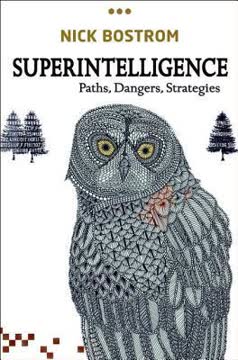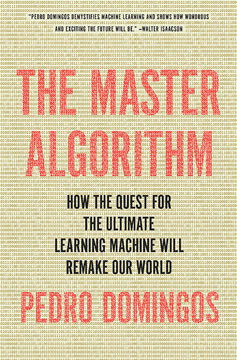Key Takeaways
The Second Machine Age is transforming our economy and society
"Our generation is going to have the good fortune to experience two of the most amazing events in history: the creation of true machine intelligence and the connection of all humans via a common digital network, transforming the planet's economics."
Profound shift underway. We are entering a second machine age, as significant as the Industrial Revolution. While the first machine age was about overcoming physical limitations through steam power and electricity, this new era is characterized by digital technologies overcoming the limitations of our minds.
Accelerating change. The pace of technological progress is rapidly accelerating:
- Self-driving cars have gone from impossible to reality in just a few years
- Computers can now understand and respond to human speech
- Robots are becoming increasingly capable and humanoid
- Artificial intelligence systems like IBM's Watson can outperform humans in complex tasks
This technological revolution is reshaping every aspect of our economy and society, from how we work and communicate to how we learn and create. The implications are profound and far-reaching.
Digital technologies are exponential, digital, and combinatorial
"The sheer density and complexity of our digital world brings risk with it."
Exponential growth. Moore's Law - the doubling of computing power roughly every two years - continues to hold true. This exponential improvement in digital technologies leads to capabilities that can seem almost magical.
Digitization of everything. As more of our world becomes digitized and connected, we're seeing an explosion of data and digital content:
- Over 300 billion emails sent daily
- 500 million tweets per day
- 4 billion YouTube video views per day
Combinatorial innovation. Digital technologies can be mixed and matched in novel ways, leading to rapid innovation. Key examples:
- Smartphones combine computing, GPS, cameras, sensors, and more
- Sharing economy platforms like Uber and Airbnb leverage digital networks
- 3D printing combines digital designs with new manufacturing techniques
This combinatorial nature accelerates the pace of innovation and leads to unexpected breakthroughs.
Artificial intelligence and global connectivity are game-changers
"When 'winner-take-all' markets become more important, income inequality will rise because pay at the very top pulls away from pay in the middle."
AI revolution. Artificial intelligence is rapidly advancing, with machines now able to perform complex cognitive tasks:
- Image and speech recognition
- Natural language processing
- Complex problem-solving and decision-making
This has profound implications for automation and the future of work.
Global digital network. The internet and mobile technologies have connected billions of people globally:
- Over 4 billion internet users worldwide
- 5 billion mobile phone users
- Instant global communication and information sharing
New opportunities. This combination of AI and connectivity creates immense opportunities:
- Global collaboration and innovation
- Access to knowledge and education for billions
- New business models and economic paradigms
But it also brings challenges like job displacement and winner-take-all dynamics in the digital economy.
Technology creates both bounty and spread in the economy
"GDP and productivity growth are important, but they are means to an end, not ends in and of themselves."
Increasing bounty. Digital technologies are creating enormous economic value and improving our quality of life:
- More affordable and higher-quality goods and services
- New products and experiences previously unimaginable
- Productivity gains across industries
Growing spread. However, the benefits are not evenly distributed:
- Growing income inequality
- Job polarization - growth in high and low-skill jobs, decline in middle-skill jobs
- Winner-take-all dynamics in many digital markets
This tension between bounty and spread is a defining feature of the second machine age. While the overall economic pie is growing, an increasing share is going to a small segment of the population, leaving many behind.
Skills like ideation and large-frame pattern recognition remain valuable
"We've never seen a truly creative machine, or an entrepreneurial one, or an innovative one."
Human advantages. Despite rapid AI progress, humans retain key advantages:
- Creativity and ideation
- Complex communication and emotional intelligence
- Adaptability and problem-solving in novel situations
Complementary skills. The most successful workers will combine their uniquely human skills with technological capabilities:
- Data-driven decision making augmented by human judgment
- Design thinking combined with advanced digital tools
- Leadership and teamwork in technology-enabled organizations
Education imperative. Developing these complementary human+machine skills is crucial:
- Focus on creativity, critical thinking, and adaptability in education
- Lifelong learning to keep pace with technological change
- Combining technical knowledge with broad interdisciplinary thinking
Education and entrepreneurship are key to adapting
"Entrepreneurship has been an important part of the Econ 101 playbook at least since economist Joseph Schumpeter's landmark work, written in the middle of the twentieth century, on the nature of capitalism and innovation."
Rethinking education. Our education system must evolve to prepare people for the second machine age:
- Emphasis on creativity, problem-solving, and adaptability
- Integration of technology throughout the curriculum
- Focus on lifelong learning and reskilling
Fostering entrepreneurship. New businesses are crucial for job creation and innovation:
- Reduce barriers to starting businesses
- Improve access to capital and resources for entrepreneurs
- Create supportive ecosystems for startups and innovation
Policy priorities:
- Invest in research and development
- Improve STEM education while also emphasizing creativity
- Support worker retraining and transition assistance
We must rethink economic metrics and policies for the digital era
"Because they have zero price, these services are virtually invisible in the official statistics. They add value to the economy, but not dollars to GDP."
Beyond GDP. Traditional economic measures like GDP fail to capture much of the value created in the digital economy:
- Free digital services (e.g., Google, Wikipedia)
- Improvements in quality of life and convenience
- Environmental and social impacts
New metrics needed. We need new ways to measure economic progress and well-being:
- Digital economy indicators
- Quality of life and happiness measures
- Sustainability and inequality metrics
Policy implications. As the nature of work and value creation changes, policies must adapt:
- Rethinking social safety nets and income support
- Tax policies that account for digital and intangible assets
- Intellectual property laws for the digital age
Technological progress brings risks but enormous potential benefits
"We can reap unprecedented bounty and freedom, or greater disaster than humanity has ever seen before."
Potential risks:
- Job displacement and economic disruption
- Increased inequality and social tensions
- Privacy and security concerns
- Existential risks from advanced AI
Enormous opportunities:
- Dramatic improvements in healthcare and longevity
- Solutions to global challenges like climate change
- Unprecedented access to knowledge and education
- New frontiers of human creativity and exploration
Shaping our future. The outcomes of the second machine age are not predetermined. Through wise choices in policy, education, and innovation, we can harness the immense potential of these technologies to create a more prosperous, equitable, and fulfilling future for humanity.
</rewrite>
Last updated:
FAQ
What's The Second Machine Age about?
- Focus on Technology's Impact: The book explores how digital technologies, especially AI and computers, are reshaping economies and societies. It marks the transition from the first machine age, driven by physical power, to the second, characterized by mental power and digital innovation.
- Bounty and Spread: Introduces "bounty," the abundance from technological advancements, and "spread," the growing inequality in wealth and income distribution due to these changes.
- Future Implications: Discusses the effects on individuals, businesses, and policymakers, emphasizing the need for new strategies to handle rapid technological progress.
Why should I read The Second Machine Age?
- Understanding Modern Changes: Offers insights into how technology is transforming work, productivity, and economic structures, affecting everyday life and future job markets.
- Informed Decision-Making: Provides recommendations for adapting to the evolving landscape of work and technology, empowering informed career or business decisions.
- Engaging Examples: Uses engaging examples and anecdotes to make complex ideas accessible and relatable.
What are the key takeaways of The Second Machine Age?
- Exponential Growth of Technology: Highlights that technological progress is exponential, leading to rapid societal changes, exemplified by Moore's Law.
- Digital Goods and Non-Rivalry: Explains that digital goods are non-rival with near-zero marginal costs, challenging traditional economic models.
- Inequality and Job Displacement: Discusses how technological advancements can increase inequality, concentrating benefits among a few and challenging workers in routine jobs.
What are the best quotes from The Second Machine Age and what do they mean?
- “Technology is a gift of God.”: Highlights technology's transformative power in shaping civilizations and improving life, underscoring its potential to drive progress.
- “Any sufficiently advanced technology is indistinguishable from magic.”: Reflects the awe new technologies inspire, suggesting advanced tech may seem miraculous to those unfamiliar with it.
- “The greatest shortcoming of the human race is our inability to understand the exponential function.”: Emphasizes the struggle to grasp exponential growth, crucial for understanding rapid technological changes.
How does The Second Machine Age define "bounty" and "spread"?
- Bounty Explained: Refers to the abundance of goods, services, and opportunities from technological advancements, signifying positive economic effects like increased productivity.
- Spread Defined: Highlights growing inequality in wealth and income distribution accompanying technological progress, pointing to disparities in who benefits from innovations.
- Interconnected Concepts: Argues that while bounty can lead to economic growth, it can also exacerbate social inequalities, necessitating policy interventions for equitable distribution.
What is Moore's Law as discussed in The Second Machine Age?
- Definition of Moore's Law: Observes that the number of transistors on a microchip doubles approximately every two years, leading to exponential computing power growth.
- Implications for Technology: Drives economic growth and productivity by enabling increasingly powerful and efficient technologies, a key driver of the second machine age.
- Historical Context: Has held true for over four decades, influencing various sectors and industries, central to the computer age.
How does The Second Machine Age address the challenges of inequality?
- Recognition of Inequality: Acknowledges that technological advancements can lead to increased inequality, concentrating benefits among a small group.
- Policy Interventions: Discusses the need for interventions like improved access to education and training for vulnerable workers to ensure broader benefits from technological progress.
- Long-Term Solutions: Advocates for solutions promoting inclusive growth, essential for sustaining economic progress and social stability amid rapid technological change.
What role does artificial intelligence play in The Second Machine Age?
- AI as a Transformative Force: Key driver of the second machine age, enabling machines to perform cognitive tasks once thought exclusively human.
- Applications of AI: Examples like IBM's Watson in healthcare and OrCam for the visually impaired show AI enhancing human capabilities and quality of life.
- Future Prospects: As AI advances, it will increasingly shape the economy and society, raising ethical concerns and potential job displacement issues.
How does The Second Machine Age suggest we measure economic progress?
- Limitations of GDP: Argues traditional measures like GDP fail to capture the full value of digital goods and services, leading to misleading economic well-being conclusions.
- Consumer Surplus as a Metric: Proposes using consumer surplus to measure economic progress, reflecting the value individuals derive from goods and services relative to cost.
- Need for New Metrics: Calls for developing metrics accounting for intangible assets and digital technologies' impact on well-being for a clearer economic progress picture.
What is the "strong bounty" argument presented in The Second Machine Age?
- Focus on Overall Improvement: Suggests rising inequality may be less concerning if overall economic conditions improve for everyone, even if benefits are unevenly distributed.
- Counterpoint to Inequality Concerns: Argues that if lower-income groups see quality of life improvements, focusing on income disparity may be misplaced.
- Critique of the Argument: Challenges this view with data showing many losing ground in absolute terms, indicating inequitable technology benefits.
How does globalization relate to the themes in The Second Machine Age?
- Globalization's Impact on Jobs: Discusses how globalization, alongside technology, contributes to job displacement and wage stagnation, especially in manufacturing.
- Competition from Abroad: Explains that global hiring pressures local labor markets, leading to wage declines in certain job categories.
- Interplay with Technology: Argues that while globalization is significant, rapid technological innovation is a more critical economic change driver.
How do the authors suggest we prepare for the future of work in The Second Machine Age?
- Emphasize Education and Skills: Advocates for education fostering creativity, critical thinking, and adaptability to thrive in a technology-driven economy.
- Encourage Entrepreneurship: Highlights supporting startups and innovation to create new job opportunities and drive economic growth.
- Policy Recommendations: Proposes measures like a negative income tax and improved education access to mitigate technological change effects on the workforce.
Review Summary
Readers found this book to be an engaging and thought-provoking exploration of how AI and automation are reshaping the economy. Many appreciated the balanced perspective on both the benefits and challenges of technological progress. Some felt the policy recommendations were a bit vague, but overall praised the book's insights into the future of work and society in the age of intelligent machines. The accessible writing style made complex economic concepts understandable to a general audience.
Similar Books







Download PDF
Download EPUB
.epub digital book format is ideal for reading ebooks on phones, tablets, and e-readers.




